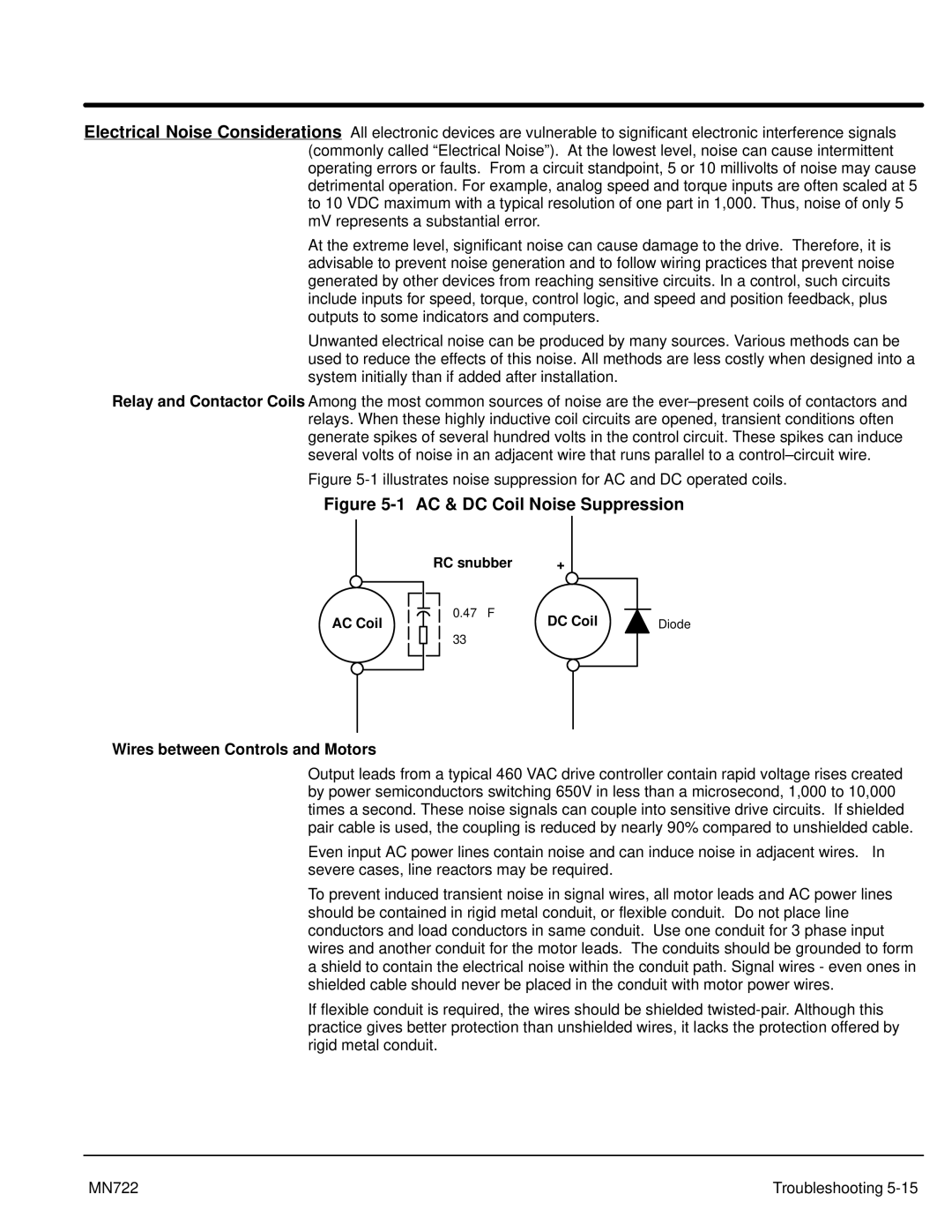
Electrical Noise Considerations All electronic devices are vulnerable to significant electronic interference signals (commonly called “Electrical Noise”). At the lowest level, noise can cause intermittent operating errors or faults. From a circuit standpoint, 5 or 10 millivolts of noise may cause detrimental operation. For example, analog speed and torque inputs are often scaled at 5 to 10 VDC maximum with a typical resolution of one part in 1,000. Thus, noise of only 5 mV represents a substantial error.
At the extreme level, significant noise can cause damage to the drive. Therefore, it is advisable to prevent noise generation and to follow wiring practices that prevent noise generated by other devices from reaching sensitive circuits. In a control, such circuits include inputs for speed, torque, control logic, and speed and position feedback, plus outputs to some indicators and computers.
Unwanted electrical noise can be produced by many sources. Various methods can be used to reduce the effects of this noise. All methods are less costly when designed into a system initially than if added after installation.
Relay and Contactor Coils Among the most common sources of noise are the
Figure 5-1 illustrates noise suppression for AC and DC operated coils.
Figure 5-1 AC & DC Coil Noise Suppression
AC Coil
RC snubber | + |
|
0.47 mF | DC Coil | Diode |
|
33W
–
Wires between Controls and Motors
Output leads from a typical 460 VAC drive controller contain rapid voltage rises created by power semiconductors switching 650V in less than a microsecond, 1,000 to 10,000 times a second. These noise signals can couple into sensitive drive circuits. If shielded pair cable is used, the coupling is reduced by nearly 90% compared to unshielded cable.
Even input AC power lines contain noise and can induce noise in adjacent wires. In severe cases, line reactors may be required.
To prevent induced transient noise in signal wires, all motor leads and AC power lines should be contained in rigid metal conduit, or flexible conduit. Do not place line conductors and load conductors in same conduit. Use one conduit for 3 phase input wires and another conduit for the motor leads. The conduits should be grounded to form a shield to contain the electrical noise within the conduit path. Signal wires - even ones in shielded cable should never be placed in the conduit with motor power wires.
If flexible conduit is required, the wires should be shielded
MN722 | Troubleshooting |
